The Atlanta Fly Fishing Show

By Justin Pickett
THE ATLANTA EDITION OF THE FLY FISHING SHOW MADE ITS DEBUT AT THE INFINITE ENERGY CENTER ON FEBRUARY 3RD AND 4TH, AND WE WERE THERE TO WATCH IT GO DOWN.
I’m a little behind, but there’s never really a bad time to talk fly fishing. With crazy schedules forcing us to divide and conquer, Louis attended on the 3rd, and I the 4th. With other bigger, successful, annual shows preceding Atlanta, this event would surely be compared to the others that came before it. In the weeks prior, the Fly Fishing Show had already stopped in Denver, as well as Somerset, which boast big names and big crowds. Louis and I both wondered if Atlanta would be able to stack up to the other show stops, and, in the end, I think we were both happy with the results.
Walking onto the showroom floor, I was pleased to be greeted with the immediate, loud chatter that I often associate with large, indoor shows such as this. The large crowd was scattered amongst the aisles, and there was a group of anglers at every booth, jib-jabbing about fly fishing. I made my way around the perimeter booths first, running into a few old friends, as well as some new friends. Stopping to speak with Oliver White for a bit, I was able to see Lefty doing a demonstration on the casting pond with folks, like Flip Pallot, watching eagerly. No one can resist watching Lefty do a casting demonstration. Making my way around the block, I was pleased to see a great presence by the local fly shops, outfitters, and guides. Many were there to promote their fisheries, some of the Southeast’s most diverse. Other local Georgians were repping for some of the bigger names, such as tarpon maniac Joel Dickey (Thomas & Thomas). Dotted amongst the local establishments, were the lodges from both near and far promoting their fisheries as well.
Along the left wall of the show was one of my favorite stops
Read More »Sunday Classic / Fight The Good Fight, in Saltwater or Fresh

MY FRIEND KIRK DEETER SAYS FRESHWATER AND SALTWATER FLY FISHING ARE, “TWO ENTIRELY DIFFERENT SPORTS PLAYED WITH THE SAME EQUIPMENT.”
In essence that is true and Kirk’s point is doubly true. Anyone who’s tried both can attest to that, but some of that equipment looks more similar than it is.
Reels, lines, leaders, hooks, tying materials are all different but there is likely no piece of equipment more different than the rod. There are a lot of differences between freshwater and saltwater rods and in several ways their use is quite different. This became readily apparent while giving a good friend, who guides for trout, a quick lesson before is first bonefish trip. He’s a great fisherman and caster but I could see from the look on his face that the eight weight I was lending him was strikingly unfamiliar.
We’ve talked a good bit about saltwater casting, the double haul and line speed but for those who are making the switch from trout to saltwater fly fishing, I’d like to offer some pointers on the techniques that I feel are the least intuitive. The fighting of fish.
When it comes to the fight, the trout rod and the saltwater rod are truly two different tools and they require different techniques. The divergence of those techniques starts with a fundamental element, the fish. It is the difference in the fish that dictates both the design of the rod and the tactics employed in its use.
Read More »Saturday Shoutout / Claypool and Ween

Here’s a fishing show that might get me back in front of the television. Apparently Mickey Melchiondo (AKA Deen Ween) and Les Claypool (of Primus) are teaming up with Matt Stone and Trey Parker (the creators of South Park) to produce a fishing show. The pair will host celebrity guests and promises to be hysterical. Both Ween and Claypool fly fish. Who knows how much of that we’ll see but expect the show to be worth checking out. I expect it’s the closest I’ll get to actually fishing with these guys. You can get more info HERE. Louis Cahill Gink & Gasoline www.ginkandgasoline.com hookups@ginkandgasoline.com Sign Up For Our Weekly Newsletter!
Read More »Soft Presentation With Tim Rajeff
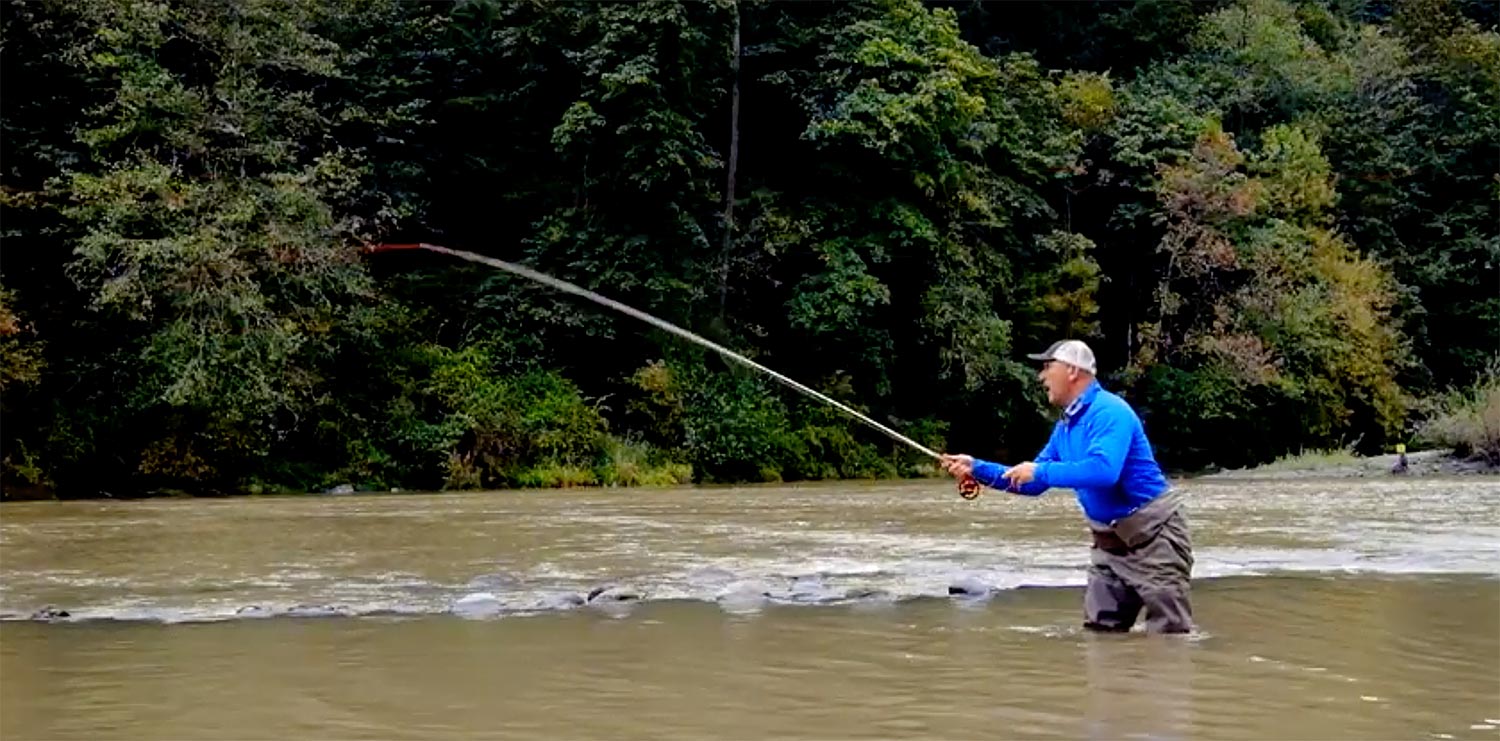
Tim Rajeff shows you two effective styles of soft presentation casts.
Whether you’re offering a #20 spinner to a sipping trout or tossing a toad to a lunker tarpon, a soft presentation is key to success. Too many anglers struggle with making an accurate cast that lands softly.
No one knows fly casting like Tim Rajeff, so I asked him to take a minute to show us how he presents the fly when the pressure is on. He shared two types of casts he uses, depending on the conditions. Master these two casts and you’ll catch a lot more fish when things get technical.
WATCH THE VIDEO TO LEARN TIM RAJEFF’S SOFT PRESENTATION CASTS.
Read More »Standing in the River Carrying a Torch
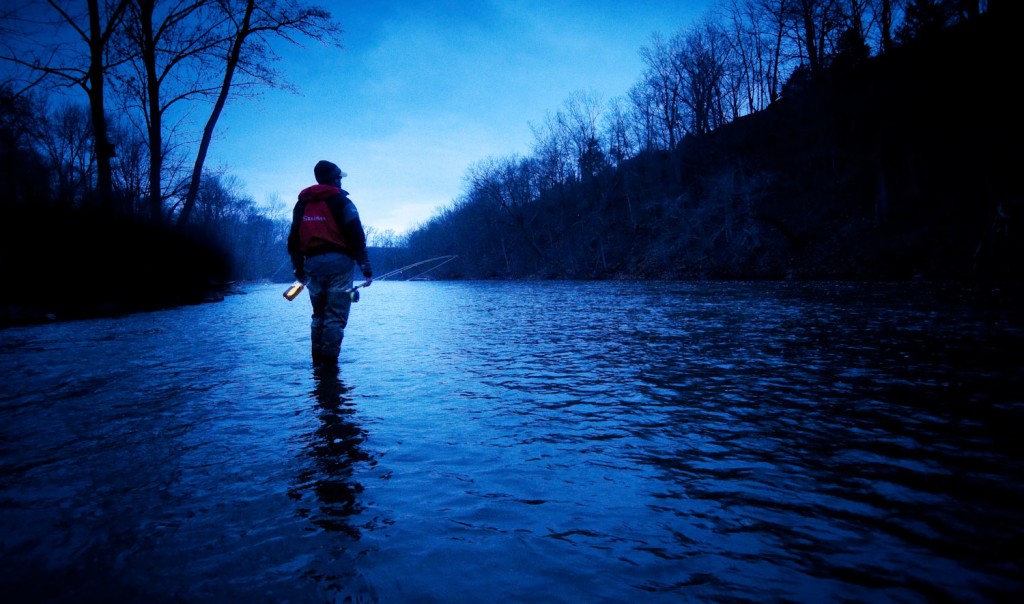
Standing in the River Carrying a Torch
A different kind of love story.
Men and fish parted ways a long time ago. You couldn’t call it an amiable divorce. The fish got everything. The mountain streams, the lazy winding rivers, the deep blue sea, everything. Men had to pack their bags and crawl, with their heads hanging, out onto the land and they were not happy about it. They learned to breathe air and walk on two legs but they never stopped dreaming of swimming in the dark oceans, nor of the long and lovely fish that had sent them packing. They thought about fish all the time. They made their homes near the water and lurked around the shore, peering into the depths. Men wondered if the fish ever thought about them. Probably not. They saw fish from time to time, sliding gracefully through a pool or leaping a waterfall. They seemed happy. They seemed to have moved on, forgotten about men altogether. Men knew they should be happy for the fish, but they weren’t. They were bitter and moody and often cried at night. Men invented alcohol and that helped. It didn’t take their mind off of fish but liquor is a good listener and it doesn’t judge or mind if you cry.
“Who needs fish, Fuck ’em”, men decided. They turned their back on the water and went to the woods and found animals and for a while it took their mind off of things. They stalked and chased and laid in wait and for a while the pretty little deer were fun, but in time those big black eyes just seemed empty. Men had nothing to talk to deer about. Try to explain to deer about the ocean, about gliding through the waves, your body taut and glistening, one with the current. Deer don’t understand what it feels like to rocket up from the depths and break the surface, breaching in defiance of all things that would have you, only to disappear back into the depths. Deer don’t know anything. Eventually these encounters became bitter and joyless. There was no more stalking and chasing, no more lying in wait, just that vapid look in the headlights and the thud, thud under the wheels. Again, men found themselves staring at the water.
Men decided that if they couldn’t swim, they would fly! “Let’s see fish do that” they thought. They made airplanes and took to the sky. They soared and swooped. They glided through the clouds but when they looked down, there was always water. They built better planes. Planes that would take them higher and farther, high enough that they didn’t have to see the water anymore. Men flew to the moon. They played golf there and drove dune buggies and it was fun, but when they got back someone noticed that all the photos they had taken were of the Earth. There it was in every photo. That beautiful blue ball with those deep seductive oceans. Men went back to the moon a few times but got bored with it and stopped going. Golf just wasn’t man’s game.
Read More »The 3 C’s of Trout Fishing – Current, Cover, and Cuisine
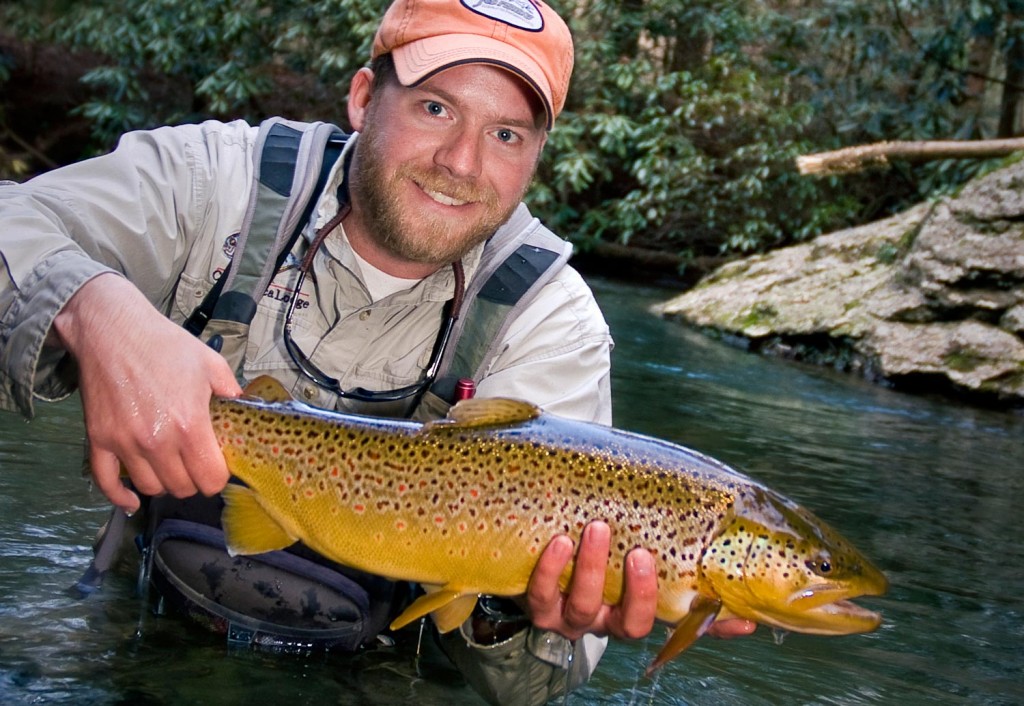
Here’s the Million Dollar Trout Fishing Question….
Are you putting enough emphasis on the 3 C’s in your trout fishing? The availability of Current, Cover and Cuisine most often dictate where trout decide to set up shop. Being able to consistently pick them out will ultimately determine how much success you have on the water. Furthermore, if you can find a spot that has all three C’s, you’re probably staring at a honey hole that holds the trophy of your dreams.
As a ignorant rookie fly fisher, I recall early on in my career, how I’d start out my day selecting a section of water, and go about mindlessly fishing its entirety from point A to point B. I had no understanding of trout’s survival instincts and how it influenced their whereabouts. All the water looked good to my untrained eyes, and I’d spend equal time fishing the entire stretch of water, regardless of the depth, where the current and food were located, or if the spot had any elements of cover. Back then I was completely clueless there was a reason 20% of the water held 80% of the fish, and in turn, I spent way too much time fishing in all the wrong places. It was amazing how long it took me to figure out why I wasn’t catching very many trout.
Don’t make this common rookie mistake, you’re better than that. Instead spend your time eliminating unproductive water, and locating and fishing productive water that has all three C’s. Doing so, you’ll find your catch numbers and size increase dramatically. Below are basic descriptions of current, cover, and cuisine, and why all three are equally important.
Current
Trout have a love hate relationship with current. They love the fact that current
Sunday Classic / Fly Fishing Stillwater by Gareth Jones
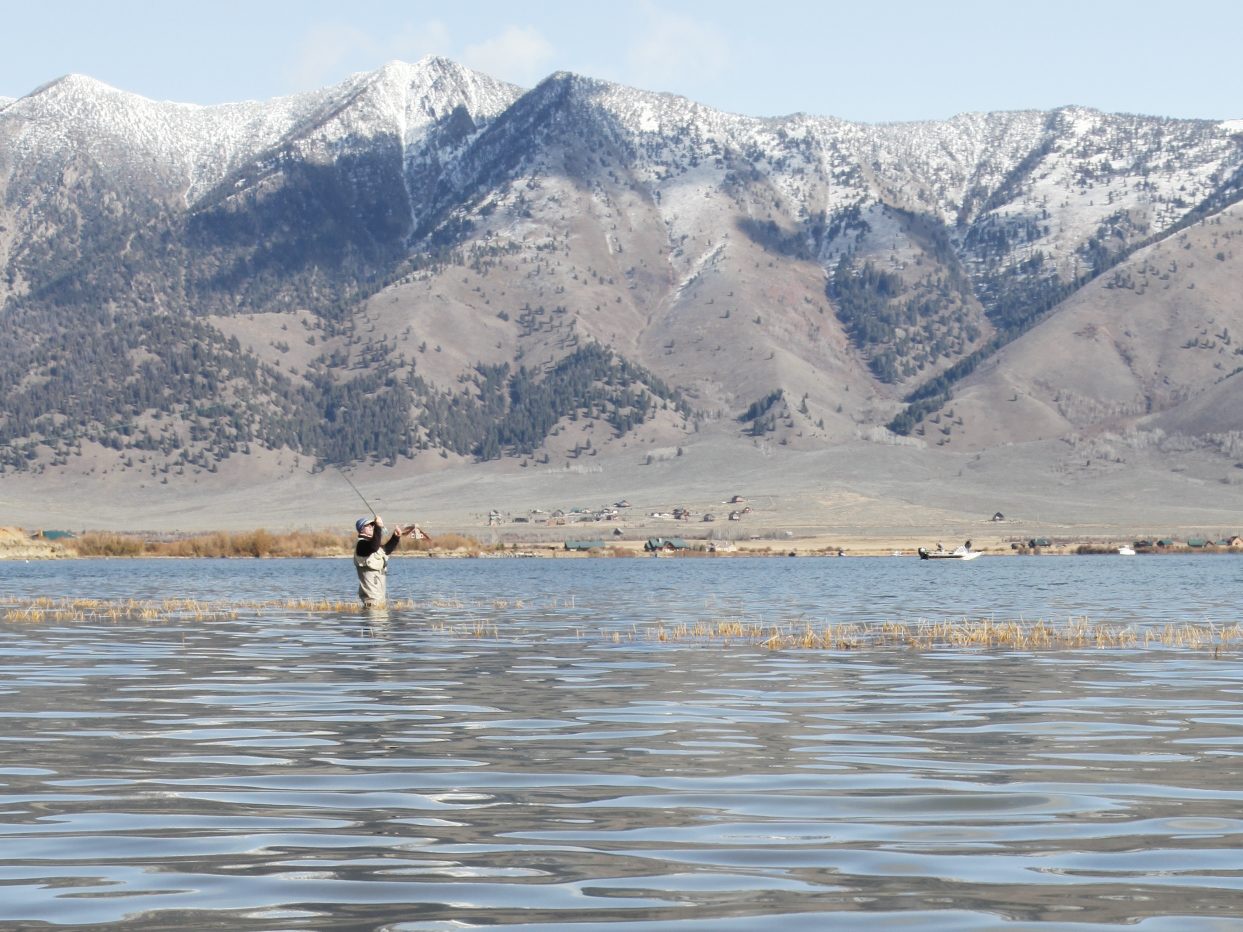
THE OTHER HENRY’S
Mention to any flyfisher that you’re heading for Island Park, Idaho and they’ll immediately think you’ll be packing a selection of CDC and biot creations intended to deceive the wonderfully selective leviathans of the Henry’s Fork.
However, my latest visit to see Rene Harrop and the boys at the TroutHunter, was all about fly fishing the incredible Stillwater’s of the region, and more specifically, Henry’s Lake. The plan was to see how fishing UK flies and techniques would work on the great Cutthroat and Hybrids that inhabit the lake. This wasn’t the first time I fished the lake. I’d visited it ten years earlier, and I remembered enjoying some wonderful sport-fishing from a float tube, fishing damsels through the gaps in the summer weeds. Needless to say, I was fairly confident that some of my own fly patterns and techniques would produce on this trip, and I was excited to hit the water.
Read More »Saturday Shoutout / Rosenbauer On The Vise
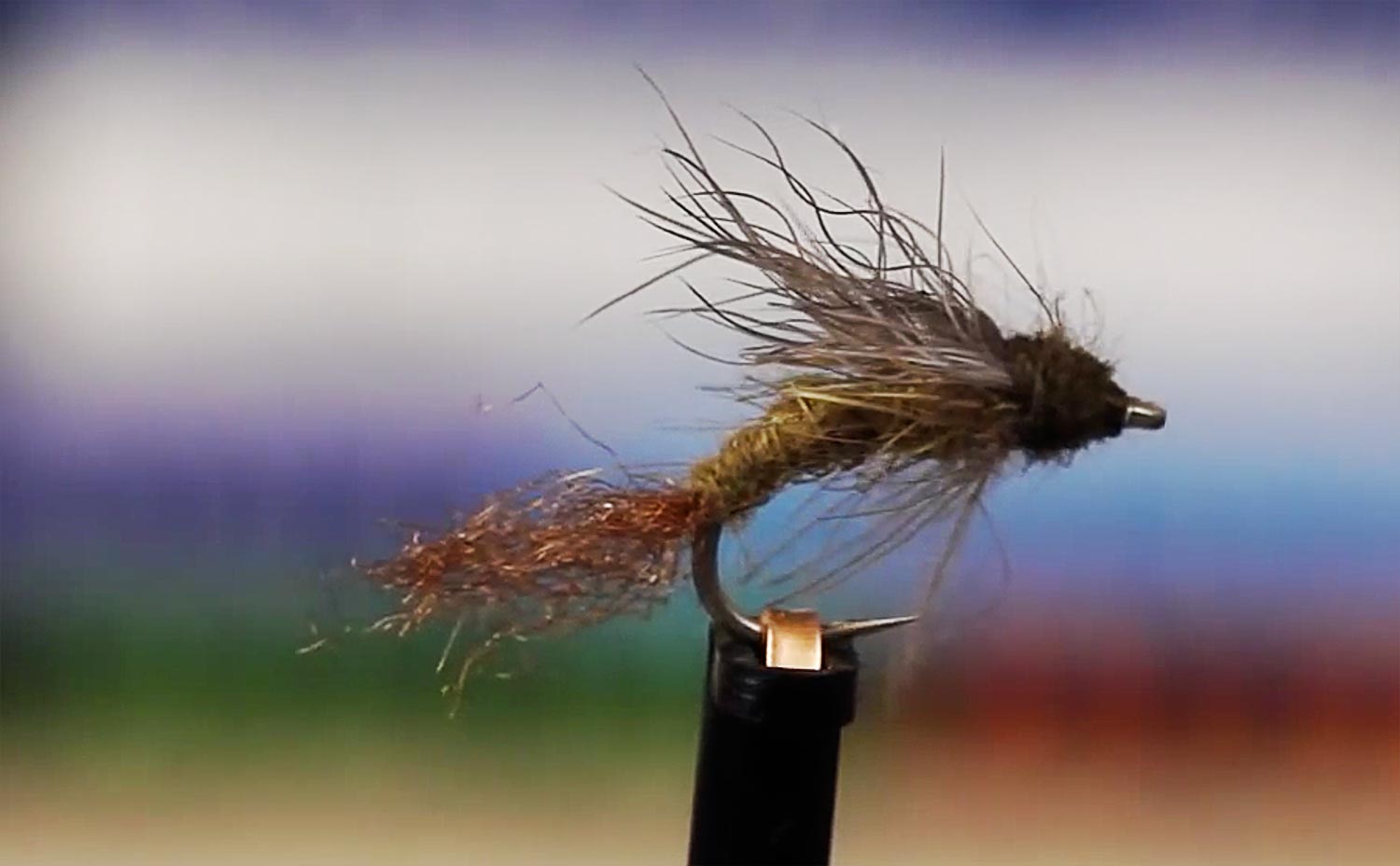
Tom Rosenbauer is a “go big, or go home” kind of guy.
Aside from being a walking encyclopedia of fly fishing, one of the most endearing things about Tom is his witty and self effacing sense of humor. When asked to come up with a video to support the Orvis Giant Fly Sale, Tom took the brunt of the joke.
The first video here is just for fun, but check out some of Tom’s more serious contributions to the art of fly tying below.
Read More »Go Barbless For Big Pike
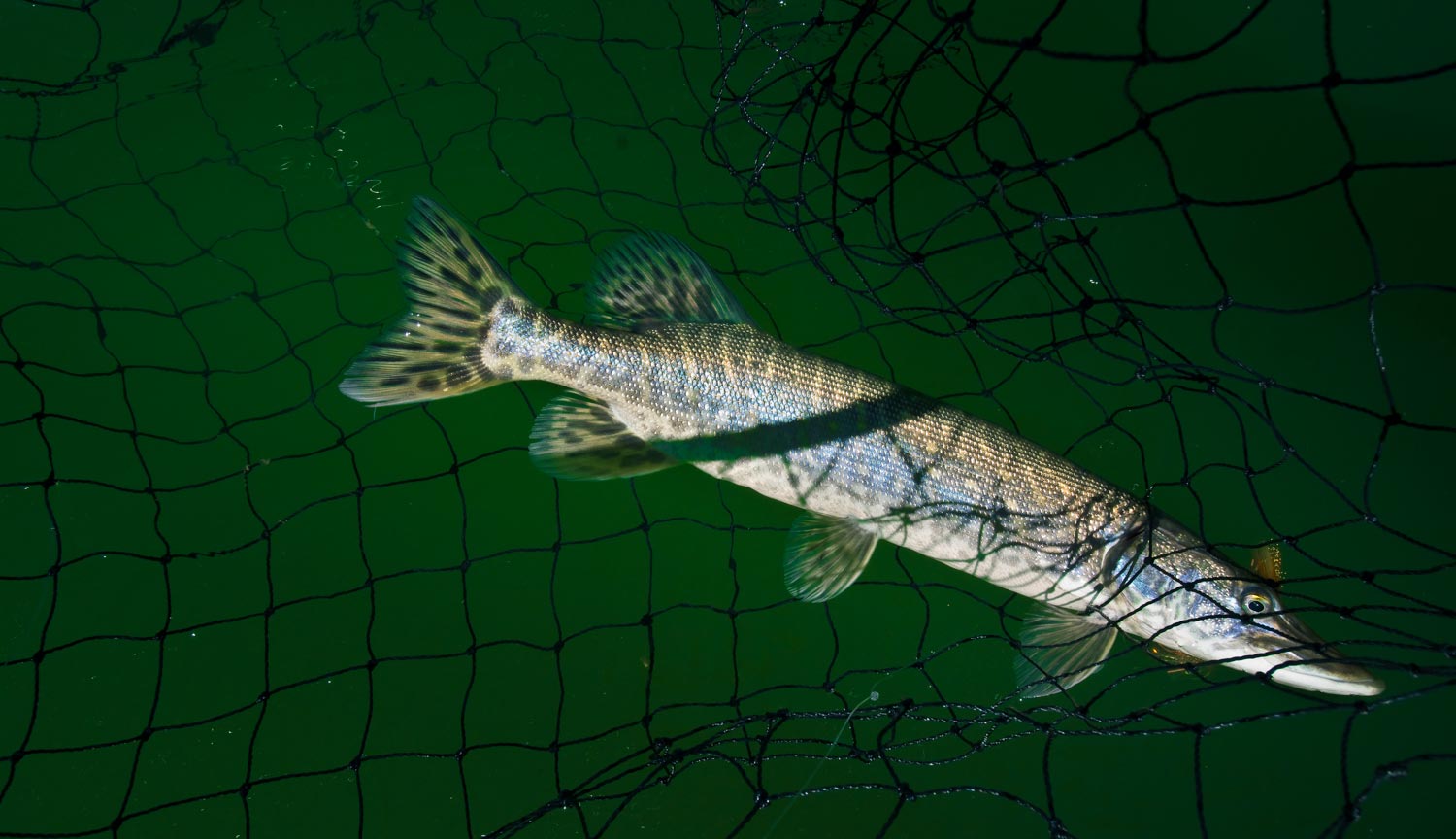
By Jason Tucker
“One sunny afternoon in Labrador.” I love saying that phrase.
One sunny afternoon in Labrador, the dry fly bite for land-locked salmon and brook trout had trailed off to nothing and we were looking for a distraction. We decided to fish for pike.
One of those things you almost never hear about in Labrador is the tremendous pike fishing. The waters are absolutely full of big pike, and when we weren’t targeting them we had to be careful not to toss a streamer into still water, lest it be instantly engulfed by a pike. Every now and then we got surprised in fast water when a pike would dash in from the still water to grab a streamer meant for a big brook trout.
We targeted pike several times during our trip when the fishing got slow. The pike were always willing to entertain, and there were plenty of bays and sloughs in which pike in the six- to fifteen-pound range were stacked up. You could fish for an hour at a time and have a hit or a fish, if not a melee, on every cast without moving location. It was some of the most exciting and memorable fishing of the trip.
We started fishing our streamers on floating lines because the takes were amazing to watch. The fish would zoom out of the depths and crash our streamers on the surface, often coming out of the water in a vicious predatory strike. So on the afternoon in question, we got this brainstorm of doing a photo shoot with mouse flies with the hooks cut off. All we wanted was to get shots of the top-water action and the vicious strikes and aerial maneuvers of the fish, without having to mess around with fighting and unhooking them.
The problem was that it didn’t work.
Read More »3 Tips for Fishing High and Dirty Water for Trout
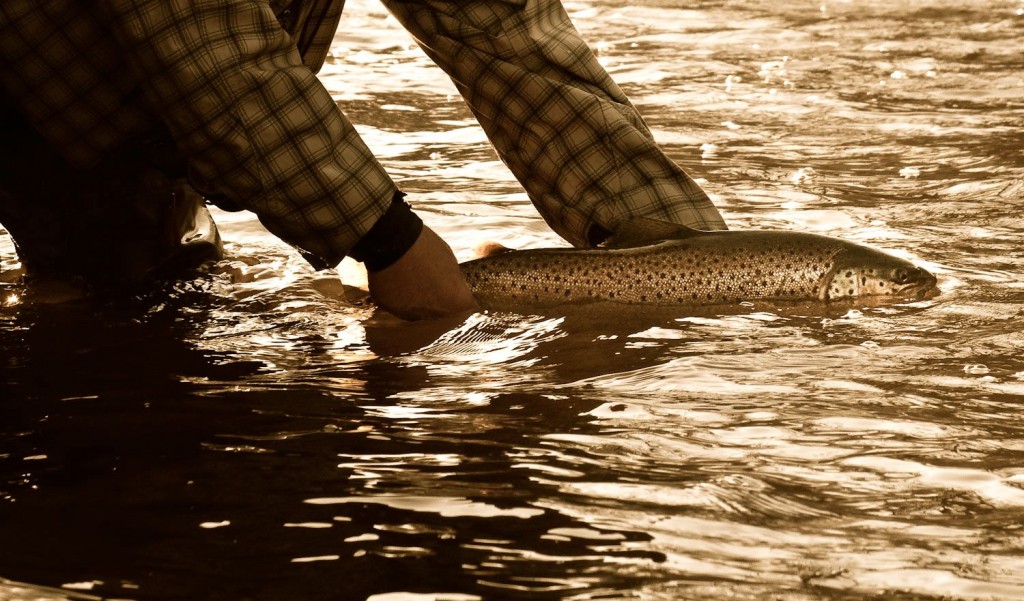
By Kent Klewein
Have you ever pulled up to a stream after a heavy rain, ready to fish, but canceled your fishing plans because the water looked too high and dirty?
I’ll be the first to admit there are times when this is the case, but very often anglers scratch their fishing plans when they should instead, have Fished-ON. The fact is, trout can see a whole lot better than we think, and if you fish the right kinds of fly patterns, and target the right water, in many cases you can do pretty darn good fishing in these water conditions. Even better, your odds at catching a trophy fish are increased, because the dingy water will both mask your approach and keep big educated trout from being able to scrutinize your fly patterns. So go ahead, call those anglers you despise and tell them the waters blown out, and you’ll have a good chance of having the water to yourself and wailing on fish all day long.
Tip 1. Target the Right Kinds of Water
So you’ve decided to take my advice and fish on, good for you. The first thing you need to do when fishing high and dirty water is target high percentage water. I search out the slower moving seams close to the banks, long stretches of fast shallow water that are followed by buckets or deep water where the fish will stack up, and eddies behind boulders or lay downs. These are all safe havens that trout search out refuge in during high water. They all allow trout to save energy by staying out of the excessive current, while capitalizing on the large influx of food sources drifting. Increased flows and rising water increases the amount of food available for trout. Many aquatic insects get flushed off the bottom of the stream, while others emerge from the freshly submerged stream banks. Examples of this are big stoneflies that are normally found hiding away in clumps of debris and under rocks, and cranefly larva that get washed in from the high water flowing along the banks.
Tip 2. Choose Larger and Brighter Fly Patterns
The second thing an angler needs to do to increase their success rate while fishing high and dirty water is choose the right kinds of fly patterns to fish. This is the one time when I feel I don’t have to carry my entire arsenal of gear. I’ll gladly leave my fly boxes with all my tiny fly patterns and light tippet spools at the vehicle. I’ll rig up a 9′-12′ 3x-4x fluorocarbon leader and carry only my fly boxes with large nymphs, bright attractors (eggs and san juan worms), and streamers. What ever you do, don’t be afraid to go big with your fly selection. For instance, larger than average egg patterns work really well in dirty water. The larger profile and bright colors allow the fish to pick them up quickly in the low water clarity. I also like to use
